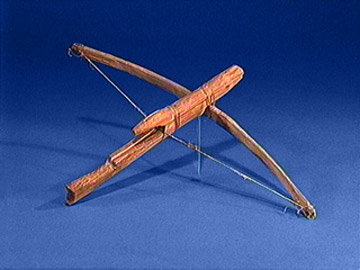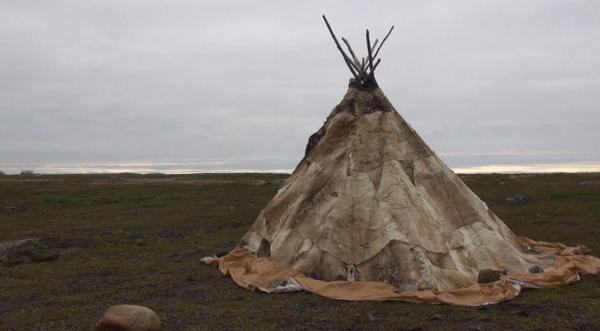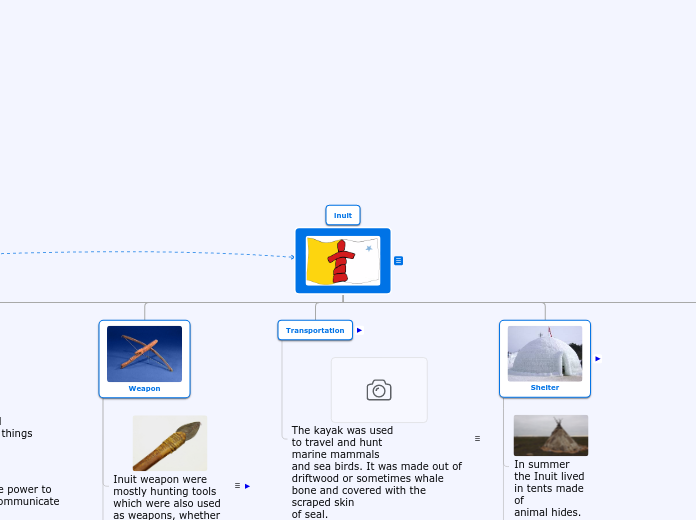

Live in
Inuit lived in northern
Canada and in Alaska
(which is in the united
states),but also in
Greenland in the north
eastern tip of Siberia(
which belongs to
Russia).

Beliefs
The Inuit believed all
living and non-living things
had a spirit.
It was believed
that masks had the power to
enabled them to communicate
to the spirits.
Some Inuit
believed that the spirits ancestors
could be in the northern lights.

Weapon

Inuit weapon were
mostly hunting tools
which were also used
as weapons, whether against other
Inuit groups or against their enemies.
some of their weapons were
spears, bow and arrows,
club and stone traps.
They
hunted whales, caribou,
musk oxen, arctic fox,
polar bear, arctic hair and
arctic birds.
Transportation

The kayak was used
to travel and hunt
marine mammals
and sea birds. It was made out of
driftwood or sometimes whale
bone and covered with the scraped skin
of seal.
Most canoes can fit two people. Manufacturers build and sell more 2-person canoes than any other size. Though the most popular boat fit two people, 1-person and 3-person canoes are the next most popular sizes. And there are some manufacturers who build canoes that can fit 4 or more people Fishing kayaks that carry more gear have kayak weight capacities from 400 to 550 and up.
Recreation, ocean, and touring kayaks have weight limits between 200 and 450 pounds.

Shelter

In summer
the Inuit lived
in tents made of
animal hides.

in the winter they lived in sod homes made
of sod and whale
bones.
igloos for
hunting trips.
Igloos were used for
hunting trips. Most igloos were about 3 to 3.5 m high and 3.5 to 4.5 m in diameter. They often housed one family. Larger igloos could hold a family up to about 20 people. Hunters sometimes made smaller igloos — about 1.5 m high and 2 m in diameter — to shelter them through the night or during a storm.
It toke them 30
minutes to build them.
Clothing
Inuit people were able to create beautiful clothing out of animal hides, fur, quills, feathers and even trees.
caribou sinew was used as thread.
girls learned by watching their mother prepare the skins. it was a lot of work.
The tools they used were made from horns, antlers, bones and wood.
Women made the clothing for their family.
inuit

Interesting facts about Inuit

A member of the Inuit people is called an Inuk.
The warm soft boots worn by the Inuit are called mukluks or kamik.

In order to mark areas and to keep from getting lost, paths were marked with a pile of stones called an inuksuk.
